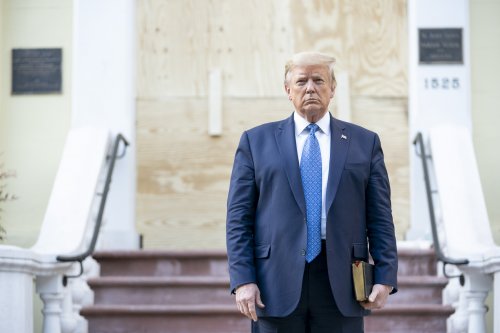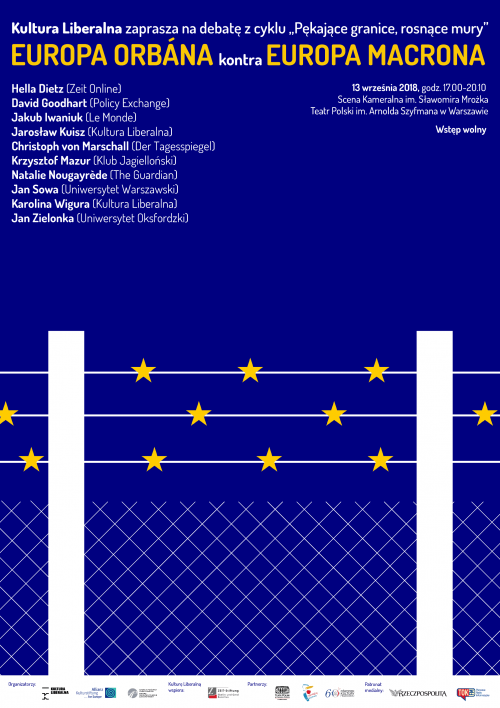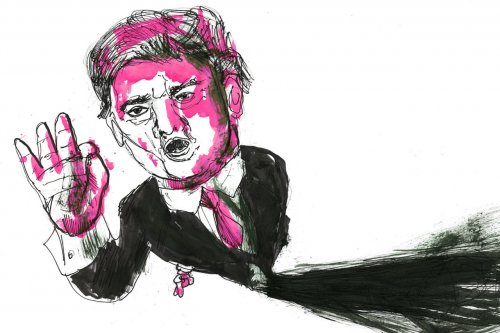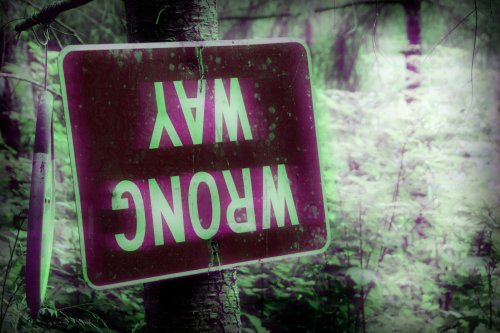“This is Poland, not the Vatican!” was one of the slogans shouted by women at a priest in Szczecinek, during the November protests. The wave of protests that followed the judgement of the Constitutional Tribunal was a direct reaction to tighter restrictions on the right to seek an abortion. But it was also a part of a broader, long-term process: the inevitable laicization of Poland, linked to its independence of 1989.
Details of new sex scandals involving priests seem to appear almost weekly. Respected church leaders are suddenly being shown in a new light. Archbishop Sławoj Leszek Głódź, Cardinal Henryk Gulbinowicz, Cardinal Stanisław Dziwisz… the Polish Catholic Church is embroiled in numerous scandals. It is unlikely that anyone still remembers the shock of removing the monument to Solidarity’s chaplain, Henryk Jankowski in Gdańsk.
Many might be under the impression that the Catholic Church is in the midst of an immense crisis. Both in Poland and abroad, the openness of public life in the 21st century and the global exchange of information have revealed sex scandals that were not public knowledge before, or that no one wanted to admit that they knew about. Societal changes in terms of intimacy are important here as well. Almost universally, people have learned how to talk about their feelings and sexual experiences. Victims of paedophilia do not want to remain silent and at the same time more and more worshippers are ready to listen to them.
What is happening in Poland is, therefore, a local reflection of global changes. But it has a special hue because of our history. Gradually, step by step, the Catholic Church started to lose its special, post-communist status. This unique institution had not only been perceived as depository of the dominant, collective morality, but was also understood as a “replacement state” for worse times.
So maybe it is only now that a generation has matured who could look at the Catholic Church in a different way, without the post-communist burden and without the historic free pass. These people were born and raised in their own, sovereign state. The “independence generation’s” perspective on the Catholic Church has been formed under completely different conditions than Jarosław Kaczyński’s, who turned 40 when the Polish People’s Republic met its demise. His political horizon was shaped in an unfree state. As he himself asserts, the Catholic Church was then the main symbol of Polishness.
Young Poles are more critical of the Church than their older compatriots and opinion polls unsurprisingly bear this out. According to an IBRIS poll for Rzeczpospolita (13-14 November 2020), as many as 47 per cent of young people (between 18 and 29 years of age) say that they perceive the Catholic Church negatively, 44 per cent neutrally and only 9 per cent positively. It is not just such data, but also the dynamics of previous historical events that indicate Poland’s continued independence and sovereignty is going to lead to its gradual laicization.
Church as a replacement state in 1st Republic of Poland
Throughout Polish history, the weaker the state, the stronger the Catholic Church.
Professor Janusz Tazbir, among others, noticed this dynamic with regard to the 1st Republic of Poland. In the 16th century the most powerful Republic of the last two Jagiellonian kings – Zygmunt Stary (Sigismund I the Old) and Zygmunt August (Sigismund II Augustus) – underwent a relatively peaceful reformation, with various religions co-existing.
Later, however, the counter-reformation succeeded and wars and crises related to the expansion of the central state followed thereafter. Somehow, almost by default, the importance of the church administration increased, especially that of parishes. When state institutions failed, the administrative apparatus of the Catholic Church very often even replaced the state. Which is telling about its influence.
Indeed, subsequent state reforms often required stripping the Catholic Church of its powers, an example being the 18th century Commission on National Education, built on the remnants of the Jesuit order.
Over time, the decline of the 1st Republic of Poland significantly strengthened the position of the Catholic Church on the Polish territory. Even in schools of the Polish People’s Republic, children were taught about resistance of the “catholic element” in the face of “the orthodox and protestant element”.
This picture is of course simplified. However, the Catholic Church’s stance when Polish national uprisings broke out has always been ignored. In fact, Pope Gregory XXVI first forbade priests from intervening in the events in the Kingdom of Poland, and then condemned the November Uprising. The national interest and the interest of the Catholic Church did not coincide. Today, the Church’s positions in the past are treated in a forgiving way, as an “accident”. But in the 1830s, Polish Catholics did not find such comfort, which is borne out by the work of our romantic authors.
2nd Republic of Poland: A story about Józef Piłsudski’s coffin
The precept of “the weaker the Polish state, the stronger the Catholic Church” needs to be supplemented by another one. Under the 2nd Republic of Poland, the longer the reborn state existed, the more visible the conflicts with the Catholic Church became.
Theoretically, after the partitions, the throne and altar should have been be allied. And many Poles today believe it to have been the case. However, this way of thinking is an imposition of our current, post-communist imagination on the past.
In the democratic March constitution of 1921, the Roman-Catholic religion was awarded “the main role among other religions” and there were no serious tensions. The supporters of Józef Piłsudski, in theory at least, wanted to build a strong state. It was Piłsudski who in 1934 said that: “The relations with the Polish clergy are very difficult. […] Bishops would like to take everything – the estate, power, government, ‘all of Poland’. They are never happy, satisfied.”
The words were noted by a priest, Bronisław Żongołłowicz, who was a member of parliament from the Non-Governmental Bloc of Cooperation with the Government of Józef Piłsudski, and, for many years, a deputy minister for religions and public enlightenment. In Żongołłowicz’s diaries, the dilemma about the balance of interests of the Polish state and the Catholic Church arises frequently
In specific cases, these interests turned out to be in opposition to each other. In 1932, during a conversation with Aleksander Prystor, Żongołłowicz was supposed to have said that “the position of the Government giving way to the clergy does not help a peaceful coexistence of the State and the Church and, paradoxically, the more concessions, the worse the relations, to the extent that the clergy has started to actively fight the Government, aggressively trying to replace the Government in the State and take secular power themselves. A normal relationship works only if both sides are equally aggressive and powerful.”
Let us emphasise – these are the words of a catholic priest. The moment Piłsudski dies, an argument breaks out about the place of his burial. Sparing the details of this surprising crisis, let us remember that the scramble between the then president and the archbishop boiled down to one basic problem: an attempt to rebuild the state’s sanctity.
Before and after 1989: Poland in Church
The words “This is Poland, not the Vatican!” are therefore a reference to fundamental realities. Without a proper state or with a malfunctioning one, the Catholic Church was a “replacement state” in Poland. This is where freedom and Polishness were to be found.
Wisdom on survival without a state was sought after in the Catholic Church, especially after 1981. The next historical moment, the next “Solidarity carnival”, was wished for. In the 1980s, people of different religions, and even agnostics and non-believers went to church. Everyone believed that this was the place to take a breath of freedom, discuss, and participate in a cultural event (sometimes of a completely secular nature). For masses of Poles, this was the real Polish state. Just read people’s diaries from these times.
After 1989, few thought about the consequences of a form of statehood that disappeared along with the Polish People’s Republic. Even if, statistically, the majority did not miss the end of the Polish People’s Republic, the institutional continuity of the Polish territory was broken again. Many Poles remain convinced about the instability and chronic weakness of Polish statehood. This belief is accompanied by, and juxtaposed to the image of a stable Catholic Church.
Every group looks for an incarnation of real power. For many Poles, the authorities of the Polish People’s Republic were not “really Polish”. No wonder then that they turned to the church. Without normal power conferred by way of democratic elections, Stefan Wyszyński and Karol Wojtyła started to epitomise Polishness. Other church leaders likewise became the heroes of the collective imagination. This might sound absurd for the younger generation now, but they included people such as “Solidarity’s chaplain” Henryk Jankowski or “the opposition’s defender” from Wrocław Henryk Gulbinowicz, along with many others.
Only against this background can the special status of the Catholic Church in Poland in the 1990s be understood. Many Poles perceived it as the only truly Polish institution, whose continuity had not been broken and which would last for centuries to come. Such a conviction that the Church was the moral guarantor in Poland was held not only by conservatives, but also by representatives of the other side, for example, Adam Michnik [“When I try to imagine Poland without the Church, I see nothing”].
If you doubt your own state…
In journalism of all political persuasions, you can find slogans about a “cartoon state”. This reluctance surrounding the Polish state is relayed from one generation to the next through education. Just flick through humanities textbooks; for 30 years, we have been asking the same, sad questions.
Is this “cartoon state” supposed to forever remain but a supplement to the Catholic Church, with a wheezing health care system and regularly-reformed public education system, without any hope for liveable pensions or disability benefits, being geopolitically dependent on American ambassadors? Will Poles never pull themselves together enough to rebuild their state, because they will always have the Church to rely on? The problem is that this institution that used to be the nation’s crutches, allowing it to walk, now looks more like a chain that impedes it from moving.
And such a view is justified.
When asked which one will last for the next 200 years, the state of Poland or the Church, many will undoubtedly say that the latter one. This answer should be taken seriously. What begs a question is the conviction of Poles who identify themselves more with the Church than with the Polish state. They are ready to subjugate the state and law to it, serve the clergy, overlook their faults, defend churches at all cost, etc. These are the facts.
But if we believe that that the dreams of Poles from the times of captivity have come true, that we are finally in Poland, in our own state, and that this will last for a long time, then, of course, the position of the Catholic Church will have to change.
It will continue to play an important role in the life of its believers. Its dominant position in small towns and in villages will not disappear overnight. But even now, the Catholic Church, as an institution is subject to “external” evaluations. The 3rd Republic of Poland has turned thirty and even despite the turbulent times of Law and Justice’s government, the continued independence of Poland will lead to its deep laicization.
Recent events are a perfect example. It will be more and more difficult to turn a blind eye to sex or financial scandals in the church. Indeed, it seems already to be the case: Huge audiences that watch the Sekielski brothers testify to that.
The most important question for the Poles is whether we finally believe that our own Polish state will last, and hence weather it makes sense to strengthen and reform it wisely. When you hear “This is Poland, not the Vatican!” today, let us secretly hope that this is the beginning of a gradual change.
Picture: Karolina Grabowska from Pexels;




